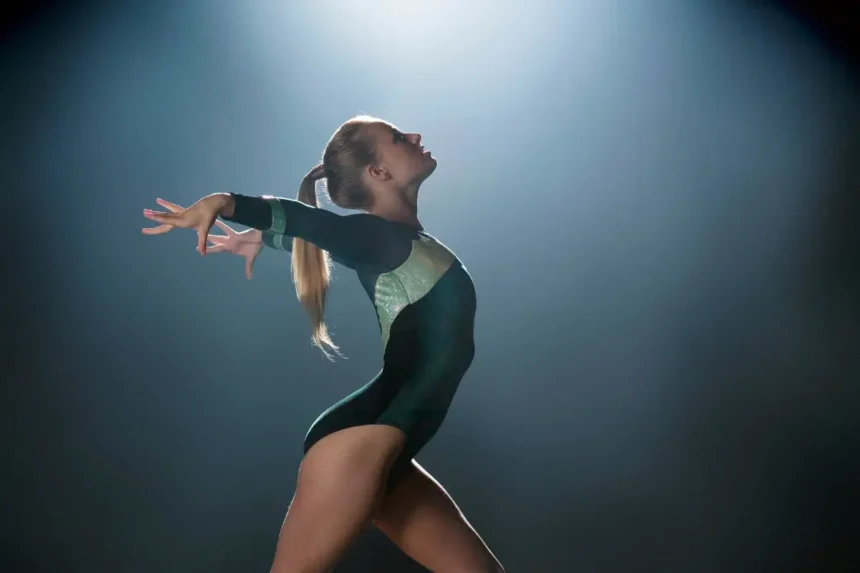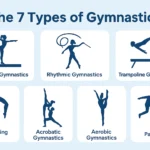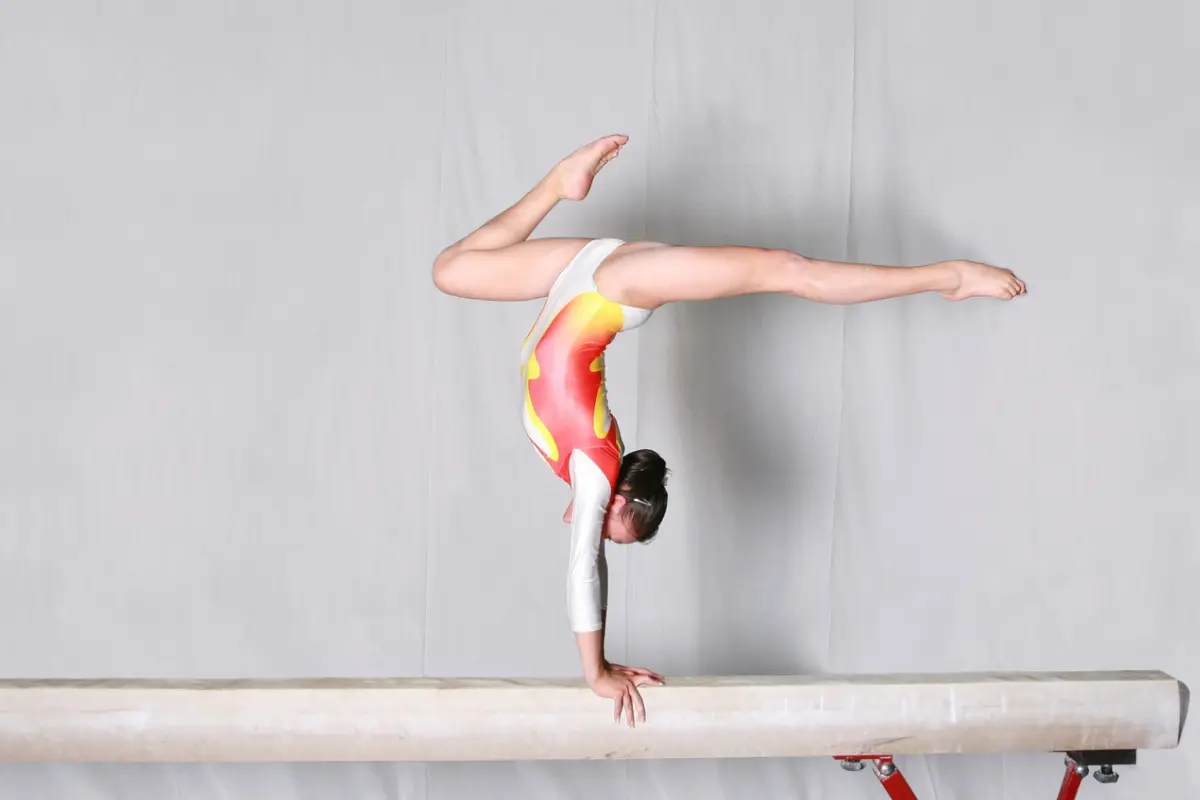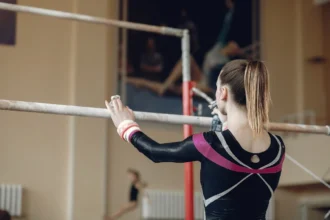The 2025–2028 FIG Code of Points ushers in refined scoring guidelines and subtle yet impactful rule updates, particularly for the floor exercise (FX). This breakdown highlights what’s new, what has stayed the same, and how these changes affect gymnasts, coaches, and fans.
Overview of the 2025–2028 Code
1. Artistry Gets a Sharper Edge
While the overall structure of element values stays largely consistent, artistry is receiving sharper attention. Judges now apply a more nuanced lens when evaluating expression, choreography, posture, and musicality—on both floor and beam.
Instead of simply “moving to music,” gymnasts are expected to perform the music, showing phrasing, style, and emotional range. Deductions in the 0.10–0.20 range are being more consistently applied for weak posture, flat expression, or filler choreography.
2. Refined Difficulty Assignments
Several small but strategic revaluations affect D-scores:
- Forward stalders: +0.1 increase in difficulty value.
- Full-twisting double layout dismount: upgraded from E to F (+0.1).
These may seem minor, but strategically incorporating revalued skills can make the difference in a tight competition.
3. Composition Requirements Reinforced
Community insights and official clarifications add new weight to routine construction:
- Multiple-salto dismount required: Ending with a single salto results in a –0.30 deduction.
- Scale (balance pose) mandatory: Missing it also incurs –0.30.
- Non-acrobatic limits: Only one strength element and one flair/circle/Russian move permitted, preventing repetitive choreographic padding.
- Single salto twisting skills grouped: Now placed in one EG, encouraging gymnasts to incorporate double salto passes for full value.
These rules push routines toward variety, structural balance, and stylistic diversity.
4. Eponymous Skills Recognized
The Code continues to celebrate gymnast innovation:
- Memmel Turn: 720° split-leg turn with free leg held at 180°, valued D (0.4).
- Silivaș: Double back tuck with two full twists, an enduring highlight skill, remains H (0.8).
General Rules & Presentation Standards
Before artistry or difficulty matter, gymnasts must meet fundamental FX rules:
Floor Area & Time Limit
- Routines are performed on a 12 m × 12 m spring floor.
- Maximum duration: 90 seconds.
- Exceeding time = –0.10 neutral deduction.
Use of Floor Space
- Full use of the floor is expected; confining movement to one section may draw deductions.
- Out-of-bounds:
- –0.10 for one foot/hand.
- –0.30 for both feet/hands or any other body part.
Music Rules
- Must be instrumental.
- Vocals without lyrics are permitted; songs with words remain prohibited.
- Performing without music = –1.0 deduction.
- Movements must stay synchronized with rhythm, phrasing, and character.
Presentation Standards
- Opening & Closing: Must begin and end with choreography—not abrupt tumbling starts or stops.
- Corners: Pausing >2 seconds before tumbling = –0.10.
- Choreography: Should involve arms, torso, head, and legs—full-body expression is required.
- Style & Rhythm: Movements must be expressive and original, flowing naturally with the music.
🔹 Even with flawless tumbling, neglecting artistry, space use, or presentation leads to costly deductions.
D-Score on Floor (2025–2028)
The D-score system remains consistent, but expectations are clearer:
1. Composition Requirements (CR) — 4 × 0.50 = 2.00
The four CRs are unchanged in intent:
- Dance Passage: Two leaps/hops in direct/indirect connection, one hitting 180° split.
- Saltos Both Directions: At least one forward/sideward and one backward salto (Arabians count forward).
- Double Salto: At least one double somersault, or two saltos connected in one line.
- Twisting Salto: At least one salto with a full twist (≥360°).
➡️ Missing any CR = –0.50 from the D-score.
2. Dismount Bonus — +0.20
- Awarded if the final element is a D-value or higher salto.
- Applies to the last performed acro element, not strictly the last pass.
- In practice, gymnasts still finish their final pass with a D+ salto to secure it.
3. Connection & Series Bonuses (CV / SB)
- Direct acro links (B + D), indirect links (C + D), and select acro-dance mixes earn bonuses.
- Standard awards: +0.10 or +0.20.
- Series Bonus (SB) applies for extended sequences meeting Code criteria.
➡️ Connection tables are streamlined this cycle, making credits easier to apply.
E-Score on Floor (2025–2028)
The E-score starts at 10.0 and deductions are taken for artistry, execution, and presentation.
Artistry & Musicality
- Posture & Carriage: Judges evaluate elegance across acro, dance, and transitions.
- Musical Expression: Must show phrasing, contrast, and style—not mechanical steps.
- Deductions (0.10–0.20) are more consistently applied for weak artistry.
Technical Execution Priorities
- Amplitude: Leaps and saltos must show height.
- Landings: Controlled finishes; steps or lunges draw deductions (–0.10 to –0.30).
- Turns: Must be fully rotated; under-rotations risk downgrade and execution loss.
- Splits: Leaps must clearly reach 180° to earn full DV.
Neutral Deductions (Objective Penalties)
Neutral deductions are applied outside of D/E panels:
- Out of Bounds: –0.10 (one foot/hand), –0.30 (both feet/hands/body part).
- Overtime: Routines >90.00 seconds = –0.10. Elements still count but penalty applies.
- Music Infractions: –1.0 for no music or lyrics in the track. Poor cuts may also draw artistry deductions.
💡 Tip: Always leave time cushion (aim for ~1:25 routine length) and double-check music files for compliance.
Summary Table: Key Updates at a Glance
| Category | Changes / Highlights |
|---|---|
| Routine Timing & Layout | 90-sec limit; 12 m × 12 m floor; boundary/time deductions clearly defined. |
| Music & Choreography | Instrumental only; non-lyrical vocals allowed; silence penalized −1.0. |
| Artistry | Stronger emphasis on expression, originality, and fluidity. |
| Difficulty Scoring | Stable A–J values; clarified credit rules for landings and turns. |
| Vault Bonus (Cross-Event) | +0.20 for contrasting vaults (forward vs backward). |
| Technical Clarifications | Ball of foot must land for DV; improved guidance for turns. |
| Named Elements | Memmel (D), Silivaș (H) remain high-value skills. |
Sources & where to check the fine print
- Official WAG Code of Points 2025–2028 (PDF): primary rules, tables, and examples. gymnastics.sport
- FIG explainer on the 2025–2028 WAG Code: plain-language overview and key carry-overs (incl. DMT bonus). gymnastics.sport
- FIG WAG Newsletter / analytics: shows how judges applied CV/Series Bonus and DMT bonus in recent meets. fig-docs.com













